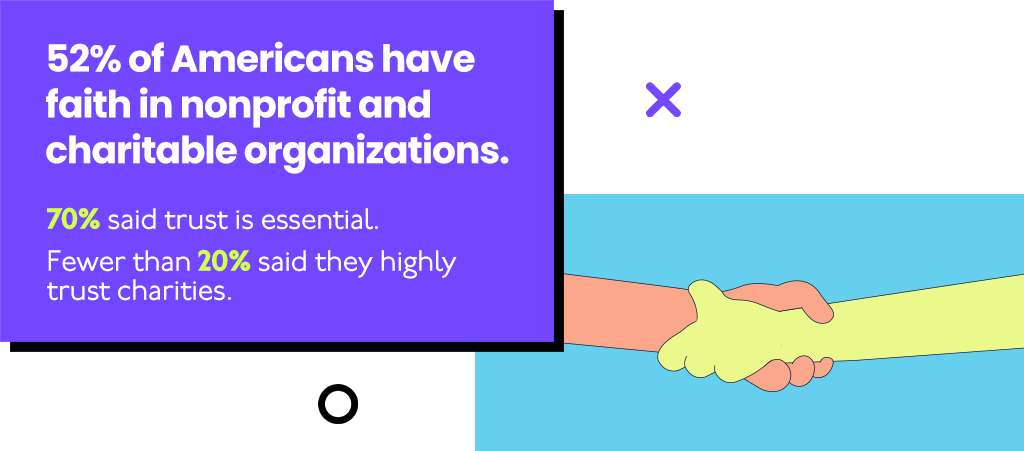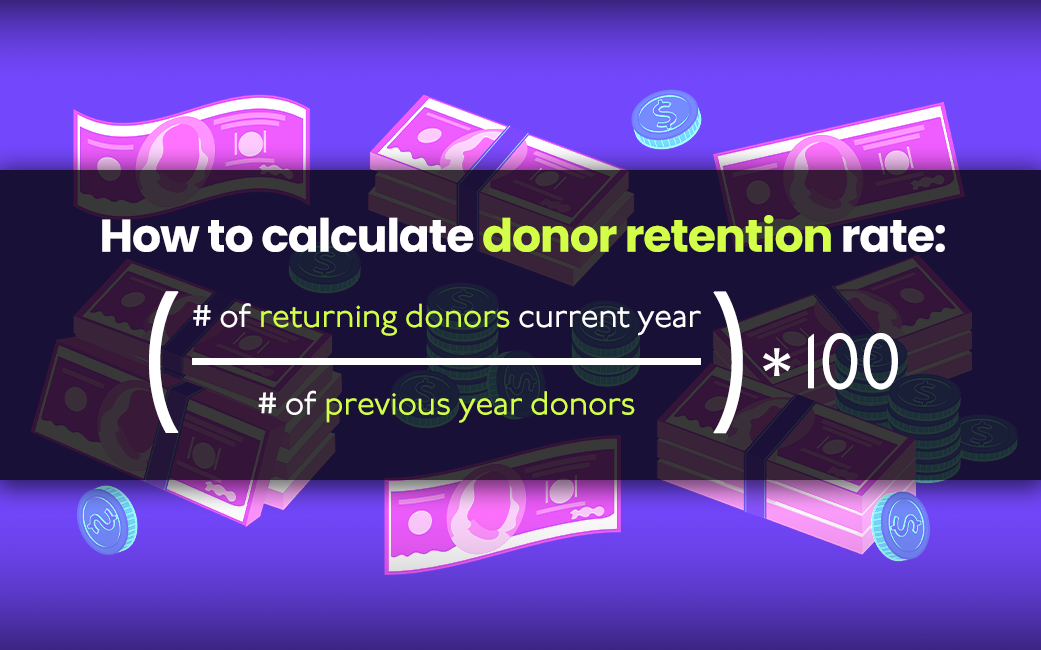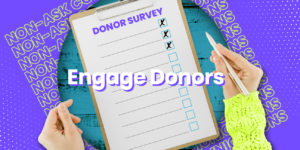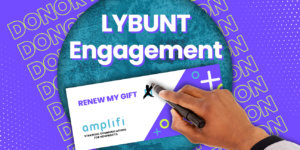How to simplify the way you manage donors.
Guest blog by Georgie Moore,
Content Marketer, Raisely.
If you’re not all that data-savvy, the concept of donor management can seem daunting. It’s all about recording and tracking data, then using this information to foster long-lasting relationships.
Maybe even the thought of data management has you feeling out of your depth.
But wait. Hold that thought.
That beautiful brain of yours has been doing this sort of data management for YEARS! Think about your relationships with friends and family. Right there – that’s a long history of shared interactions, plus information about characteristics/preferences.
Just like friendships, the more time you spend getting to know donors, the better equipped you’ll be to give them what they need, at the right time.
Best Practices.
Good data = good donor management.
Your mission, should you choose to accept it: Capture as much meaningful data as possible!
Let’s think about what data points will be most valuable to your organization:
✔️ Contact details.
✔️ Giving history (recency, frequency, and amount gifted).
✔️ Fundraisers hosted/attended.
✔️Campaign involvement.
✔️Communications to/from your organization.
✔️Interactions with your team.
✔️ Preferences for communication (method, frequency, time of day.)
✔️Basic personal information (this will help make segmentation easier later on!).
Not sure where to get started? This guide can help!
💡Some people change addresses like they change their shoes, so it’s a good idea to check in from time to time. Donor management software can make the process simple, by sending out personalized emails and SMS messages.

Privacy and security.
A recent study found only 52 percent of Americans have faith in nonprofit and charitable organizations. 70 percent said trust is “essential,” and fewer than 20 percent said they highly trust charities.
*gasp*
Based on this, it’s safe to say nonprofits already face an uphill battle when it comes to earning trust from potential prospects.
So, it is essential to be transparent about what data you’re collecting from donors and how you’re using it!
And when it comes to storing this data, make sure it’s secure. This principle applies regardless if you’re running an Excel spreadsheet or collecting online payments using nonprofit CRM software.
In short: show your donors that you care about their privacy and will guard their personal information with respect.
💡Ensure proper password management, such as multi-factor authentication, to prevent unauthorized access. You can also make donors feel safe and secure by accepting payments through PayPal (or another trusted third party service).
Back it up, back it up, back it up!
If your phone insists you do it for yourself – why wouldn’t you do it for your donors?
Backing up your data is essential. Whether it’s a software crash or a cloud issue, there are plenty of ways data can be compromised. To make sure yours stays safe: back it up often.
And in multiple places (just make sure it’s secure).
You should also test your data – making sure your backup is recoverable and easy to access.
Remember: your donor information is the key to your fundraising success. So use it, don’t lose it!
💡Create a schedule of regular database backups. That automated *ping* will keep your system sorted.
Benefits of good donor management.
Segmentation.
As your donors increase (yay!), so does the challenge of maintaining personalized communications. But never fear – segmentation is here!
Segmentation makes everything easier on your end because you’ll be able to organize people into groups based on specific factors.
You can group your donors by:
- Giving history.
- Preferred communication methods.
- Biographical information.
- Interests.
- Demographic.
- How they were acquired.
The way you choose to organize them is up to you – the world’s your oyster!
💡Now that you understand the values and needs of each group, you’ll be able to tailor your communications accordingly.

Personalization – the key to engagement.
If an email subject has your name in it, it’s really hard not to open it… am I right?
Good donor management uses personalization alongside segmentation to communicate with donors more effectively. It could even improve your open and click-through rate!
According to Campaign Monitor, the current benchmarks for nonprofits are:
- 26.% of emails get opened.
- 2.7% get a click-through.
Think you can do better? Try being more personal!
Consider this. You’re launching a new peer-to-peer campaign. You can use what you know about your donors to send personalized messages to a target group (perhaps donors from a previous year).
By personalizing donor engagement, you can make people realize their role – they are crucial for your cause!
💡You have the inside scoop on your donors, now use it to your advantage!

Keep them coming back for more.
New donors are (obviously) fantastic, but wouldn’t you rather preach to the converted?
Donor retention is so much easier than donor acquisition. After all, existing donors already believe in your work!
So, give your donors a little nurturing, and you’ll be rewarded with repeat, loyal supporters of your cause. Show your long-term donors some love by:
💜 Updating them on any significant news in your organization – 44.5 percent of donors want to know how funds raised are being used, according to CallHub.
💜 Providing the chance to give feedback – 53 percent of donors leave because there’s not enough communication.
💜 Sharing the impact of their support – 59.8 percent of campaign participants want to know how much money was raised in total.
💜 Always, always thank them for their ongoing commitment – 46 percent of donors leave due to a lack of appreciation!
💡Hot Tip: Here is how you can calculate the retention rate for your nonprofit.
DRR = [(no. of returning donors current year)/ (no of previous year donors)] * 100
According to the Fundraising Effectiveness Project, the average donor retention rate for nonprofits is 43.6 percent.
So, how does yours compare?
We know that without help, it’s easy to feel as though you’re wading through a sea of unmanageable data.
But you’ve got this.
Now go get your data on and find the right CRM for your charity and nonprofit.
About the author:
Georgie Moore is Raisely’s Content Marketer. Leading the production of all this content from blogs, webinar, email and social media, Georgie is always looking for ways to empower charities in their fundraising. Her background in the non-profit sector, agency land and now tech, has given her a strategic lens.
About Raisely:
Raisely is a fundraising platform for ambitious charities and nonprofits across the world. We started as a creative studio for social change, but then realised how underserved charities were by technology, so launched Raisely to make digital fundraising accessible to all. As a proud B Corp, we’ve helped thousands of charities fundraise over $250 million.







